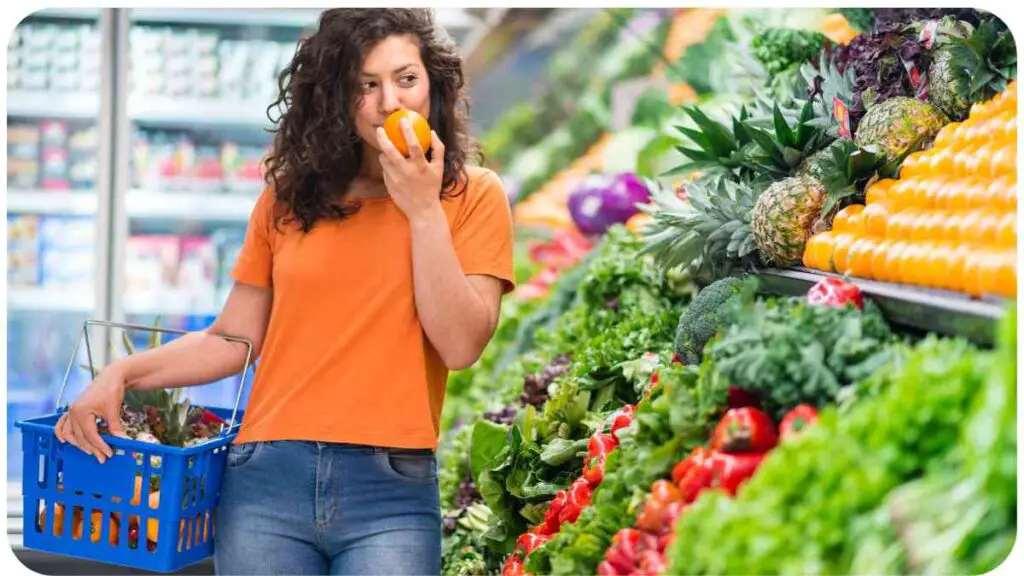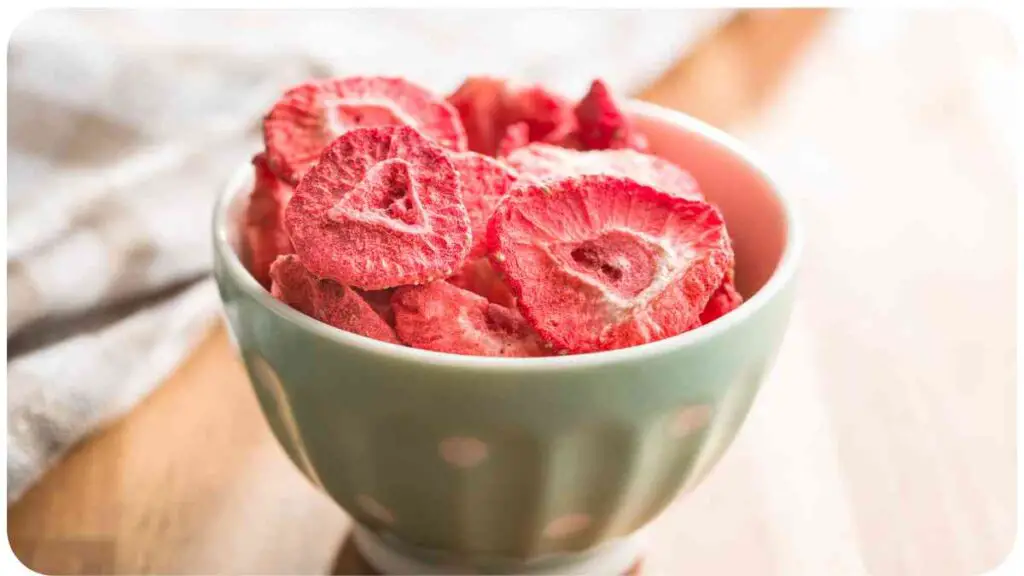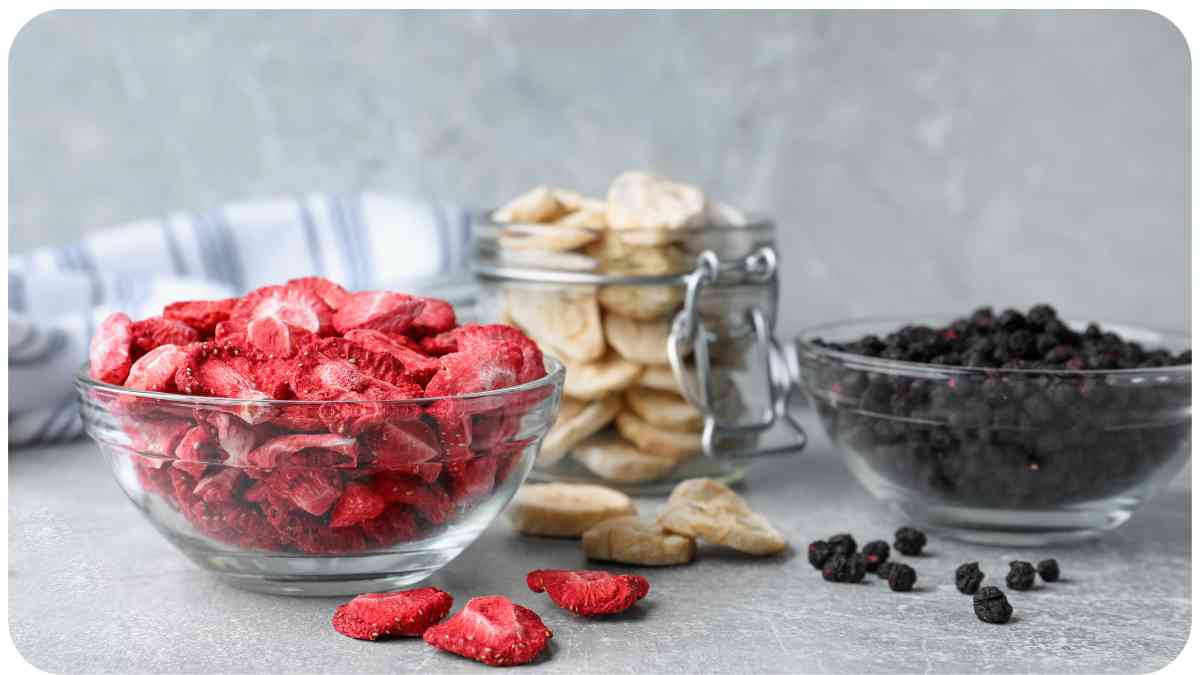Welcome to our comprehensive guide on how to store your fruits and veggies! Properly storing your produce plays a crucial role in maintaining its freshness, flavor, and nutritional value.
In this article, we will cover the best practices for storing a variety of fruits and vegetables, taking into account the factors that can affect their shelf life. We will also provide helpful tables and tips to ensure that you can easily implement these practices at home.
| Takeaways |
| Proper storage is essential for maintaining the freshness and nutritional value of fruits and vegetables. |
| Different fruits and vegetables require specific temperature and humidity conditions for optimal storage. |
| Understanding ethylene gas production can help prevent premature spoilage. |
| Freezing, canning, drying, and pickling are effective preservation methods to extend the shelf life of produce. |
| Avoid common mistakes like storing produce with strong odors together or washing before storage. |
| Use reputable resources for further guidance on fruit and vegetable storage. |
Understanding the Importance of Proper Storage
Proper storage is essential for preserving the quality and longevity of your fruits and vegetables. When stored correctly, your produce will stay fresh, flavorful, and packed with vital nutrients, ensuring that you get the most out of your grocery purchases. On the other hand, improper storage can lead to premature spoilage, loss of taste, and nutrient degradation.
“Incorporating more veggies into your diet” is essential for a healthy lifestyle. Check out our ultimate guide for plant-based eating to learn creative ways to enjoy nutritious meals.
Factors Affecting Fruit and Vegetable Storage
A variety of factors can influence how well your fruits and vegetables keep. It’s important to understand these factors to make informed decisions regarding storage conditions.
Temperature and Humidity
Most fruits and vegetables thrive in specific temperature and humidity conditions. Storing them outside of their optimal range can accelerate ripening or cause premature aging. As a general rule, a cool, dark, and well-ventilated environment is ideal for most produce.
To help you determine the ideal conditions for specific fruits and vegetables, please refer to the following table:
Table 1: Recommended Storage Conditions for Fruits
| Fruit | Ideal Temperature Range | Ideal Humidity Level |
| Apples | 30°F to 35°F (-1°C to 2°C) | 90% |
| Bananas | 58°F to 60°F (14°C to 16°C) | 90% |
| Oranges | 38°F (3°C) | 80% |
| Berries | 32°F to 35°F (0°C to 2°C) | 90% |
| Grapes | 32°F to 35°F (0°C to 2°C) | 90% |
Note: These are general recommendations, and some variations might exist depending on the variety and regional conditions.
Storing Fruits

Now, let’s delve into specific fruit storage techniques that will help you keep them fresh for longer durations.
Apples
Apples often release ethylene gas, which can accelerate the ripening of other fruits and vegetables. To prevent this, store apples separately or keep them in a perforated plastic bag in the refrigerator. Doing so will help maintain their optimal texture and flavor.
Want to ensure your cooking is both healthy and delicious? Our article on best kitchen appliances provides valuable insights into choosing the right tools that support your culinary goals.
Bananas
Bananas thrive in warmer temperatures, but their ripening process can be slowed down by refrigeration. If your bananas are not yet fully ripe, you can store them on the counter. However, if you want to slow down the ripening process, you can refrigerate them.
Light Exposure
Sunlight can negatively impact the quality and shelf life of fruits, causing them to ripen too quickly or develop off flavors. To mitigate this, it’s essential to store fruits in a dark or opaque place, away from direct sunlight.
Storing Vegetables
Proper storage techniques for vegetables are equally important to maintain their freshness and nutritional value. Let’s explore some guidelines for storing common vegetables.
Lettuce
To keep lettuce crisp and fresh, it is crucial to store it in a cool and humid environment. Place lettuce in a perforated plastic bag or wrap it loosely in a damp paper towel before refrigerating. This helps to maintain its moisture level and prevent wilting.
Keep your kitchen knives sharp effortlessly with our easy DIY tips. Learn how to maintain their performance in our comprehensive guide on knife sharpening and make the most of your food preparation.
Carrots
Carrots are best stored in the refrigerator in a plastic bag or container. However, it’s essential to remove the green tops before storing, as they can draw out moisture and lead to spoilage. Carrots can also be stored in a cool, dark place, such as a root cellar or a well-ventilated pantry.
Potatoes
Potatoes should be stored in a dark, cool place, ideally between 45°F and 50°F (7°C and 10°C). Exposure to light can cause potatoes to sprout and develop a bitter taste. Additionally, keep them away from onions as they can emit gases that accelerate each other’s deterioration.
To help you determine the optimal storage conditions for additional vegetables, please refer to the following table:
Table 2: Recommended Storage Conditions for Vegetables
| Vegetable | Ideal Temperature Range | Ideal Humidity Level |
| Lettuce | 32°F to 35°F (0°C to 2°C) | 95% |
| Carrots | 32°F to 40°F (0°C to 4°C) | 90% |
| Potatoes | 45°F to 50°F (7°C to 10°C) | 95% |
| Onions | 30°F to 35°F (-1°C to 2°C) | 65% |
Note: These recommendations are general guidelines. Different varieties and regional conditions may require slight adjustments.
Proper Storage Techniques for Specific Fruits and Vegetables
Now, let’s explore some additional tips and tricks for storing specific fruits and vegetables.
Concerned about the safety of non-stick pans? Discover your options and make informed choices when selecting cookware to ensure a healthy cooking experience.
Apples
When storing apples, it’s important to separate them from other produce due to their ethylene gas release. You can store firm apples in the refrigerator (around 32°F to 35°F or 0°C to 2°C) and consume them within a few weeks for the best flavor and texture. If you prefer crisper apples, choose varieties such as Granny Smith or Honeycrisp.
Bananas
Bananas are unique in their ripening process. If you prefer ripe bananas, you can let them ripen on the countertop. Once they reach your desired ripeness, you can transfer them to the refrigerator to slow down the process. The skin may darken in the refrigerator, but the fruit inside will remain ripe.
Lettuce
When storing lettuce, it’s important to remove any damaged or wilted leaves and wash it thoroughly before storage. After washing, spin dry the leaves or pat them gently with a clean kitchen towel. Store the lettuce in a sealed container or a resealable bag with a paper towel to absorb excess moisture, ensuring the leaves remain crisp and fresh.
Carrots
To extend the shelf life of carrots, it’s advisable to store them in the refrigerator in a perforated plastic bag to maintain humidity. If you notice any signs of decay or softening, it’s best to consume them sooner rather than later.
No need to worry if you accidentally burn your soup! Our article provides simple and effective recovery methods to salvage your meal and prevent unnecessary food waste.
Potatoes
To prevent potatoes from sprouting and developing a bitter taste, store them in a cool, dark place with good ventilation. Avoid washing potatoes before storage, as moisture can encourage spoilage. Inspect them regularly and remove any sprouting or rotten potatoes to prevent the spread of spoilage.
Extending Shelf Life through Preservation Methods
If you find yourself with an abundance of fruits and vegetables, you can use various preservation methods to extend their shelf life. Here are some effective techniques to consider:
Freezing

Freezing is a popular method that helps retain the freshness and nutrients of fruits and vegetables. Before freezing, it’s important to blanch the produce by briefly immersing it in boiling water, followed by a quick ice bath. This process helps preserve the color, texture, and flavor. Pack the blanched produce in airtight freezer-safe containers or bags, and label them with the date for easy identification.
Canning
Canning is another preservation method that allows you to store fruits and vegetables for an extended period. The process involves heat treatment and sealing in jars or cans. Follow proper canning guidelines and recipes to ensure safety and to maintain the quality of the produce.
Drying
Drying, or dehydrating, is an age-old method of preserving fruits and vegetables. Removing the moisture content prevents the growth of microorganisms that cause spoilage. You can use a dehydrator, an oven, or even air-dry certain produce. Once dried, store them in airtight containers in a cool, dark place.
Pickling
Pickling involves immersing fruits or vegetables in a solution of vinegar, water, and spices. This method not only extends the shelf life but also imparts unique flavors. Pickles can be made with cucumbers, carrots, peppers, and more. Experiment with different spices and flavorings to create your own delicious pickled creations.
For a comprehensive overview of preservation methods for different fruits and vegetables, please refer to the following table:
Table 3: Preservation Methods for Different Fruits and Vegetables
| Fruit/Vegetable | Recommended Preservation Method |
| Berries | Freezing, Drying |
| Tomatoes | Canning, Freezing |
| Peaches | Freezing, Canning |
| Cucumbers | Pickling |
| Herbs | Drying |
Note: These are just a few examples of preservation methods. You can explore other techniques based on your preferences and available resources.
Common Mistakes to Avoid
While storing your fruits and vegetables, it’s important to be aware of common mistakes that can compromise their freshness and quality. Here are a few to keep in mind:
- Storing fruits and vegetables together without considering their ethylene gas production can lead to premature spoilage.
- Neglecting to remove damaged or rotten pieces from a batch can accelerate spoilage.
- Storing produce with strong odors, such as onions and garlic, near other fruits and vegetables can cause them to absorb the flavors.
- Washing fruits and vegetables before storing them can introduce moisture, leading to decay and mold growth.
By being mindful of these mistakes and following the best practices outlined in this guide, you can significantly improve the longevity and quality of your produce.
Conclusion
Storing your fruits and vegetables properly is crucial for preserving their freshness, flavor, and nutritional value. By understanding the factors that affect their shelf life and implementing the best practices discussed in this article, you can ensure that your produce stays in optimal condition for as long as possible.
Remember to consider the ideal temperature, humidity, and storage conditions for different fruits and vegetables. Use the provided tables as references to help you create the perfect environment for your produce. Additionally, be mindful of ethylene gas production, light exposure, and the impact of other factors on the longevity of your fruits and vegetables.
When faced with an abundance of produce, consider exploring preservation methods such as freezing, canning, drying, and pickling. These methods can help you extend the shelf life of your fruits and vegetables, allowing you to enjoy them even beyond their peak season.
By avoiding common mistakes and following the tips and insights shared in this article, you can elevate your fruit and vegetable storage game. Remember, proper storage not only saves you money but also ensures that you’re consuming fresh, nutritious produce.
So, the next time you bring home a bounty of fruits and vegetables, put your newfound knowledge into practice. Your taste buds, wallet, and overall well-being will thank you!
Now, you have the tools to confidently store your fruits and veggies. Happy storing and enjoy the freshness!
Further Reading
Here are some additional resources to explore for more information on storing fruits and vegetables effectively:
Half Your Plate: Store Fruits and Veggies – This article provides practical tips and guidelines for storing various fruits and vegetables, along with helpful visuals.
EatingWell: The Best Way to Store Fruits and Veggies – Discover expert advice on keeping fruits and vegetables fresh, including storage methods, temperature recommendations, and information on ethylene gas production.
The New York Times Wirecutter: Keep Your Produce Fresh – This article offers comprehensive insights into proper storage techniques to maintain produce quality, reduce waste, and extend shelf life.
FAQs
Here are some frequently asked questions about storing fruits and vegetables:
What is the best way to store apples?
Apples should be stored in a cool, dark place with moderate humidity. You can also refrigerate them in a perforated plastic bag to extend their freshness. Ensure apples are stored separately from other produce to prevent ethylene gas exposure.
How should I store leafy greens like lettuce?
To keep lettuce fresh, wrap it loosely in a damp paper towel and store it in a perforated plastic bag in the refrigerator. Maintaining humidity while allowing for proper ventilation will help prevent wilting.
Should I wash my fruits and vegetables before storing them?
It is generally recommended to wash fruits and vegetables right before consuming them, rather than before storage. Washing produce before storage can introduce moisture, increasing the chance of spoilage and decay.
How can I prevent potatoes from sprouting?
To prevent potatoes from sprouting, store them in a cool, dark place with good ventilation. Avoid exposing them to light, which can cause sprouting. Additionally, store potatoes away from other ethylene-producing fruits and vegetables, as they can accelerate each other’s spoilage.
Can I freeze fruits and vegetables to extend their shelf life?
Yes, freezing is an effective method to extend the shelf life of many fruits and vegetables. Before freezing, it’s advisable to blanch the produce to maintain flavor and texture. Pack them in airtight containers or freezer-safe bags, ensuring to remove excess air to prevent freezer burn.

Hi, I’m Hellen James! I’m a professional chef who has been cooking for over 12 years. In my career, I’ve worked at some of the world’s most prestigious hotels and restaurants. My expertise lies in creating recipes that are simple but delicious, and I love to experiment with new ingredients and techniques. I started this blog because I want to share my passion for cooking with everyone who loves food as much as I do.


